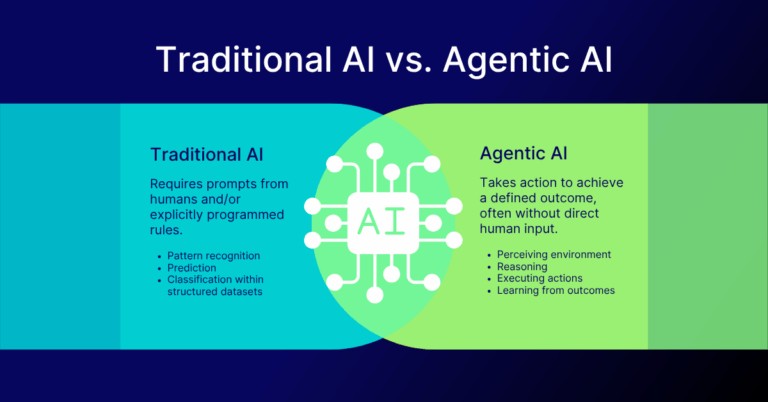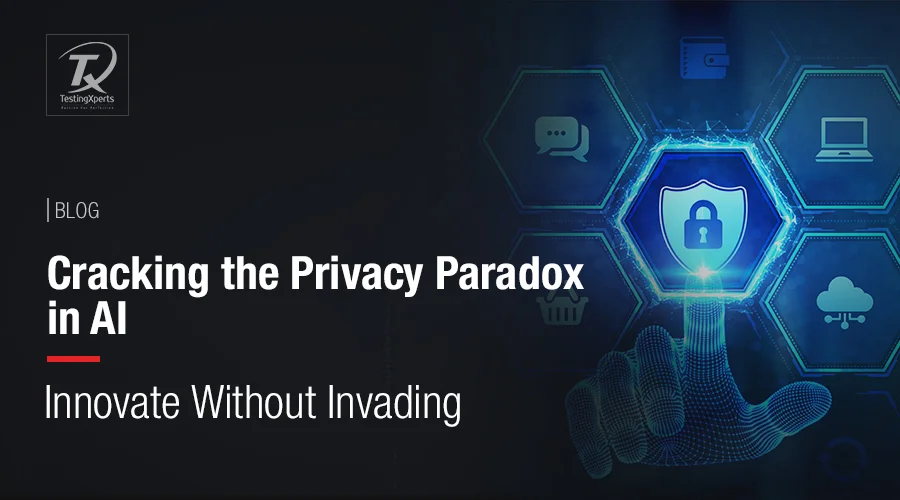
Navigating the New Frontier of AI Privacy: The Rise of Enterprise-Grade GPT Solutions
The AI Privacy Paradox: Balancing Innovation with Confidentiality
The meteoric rise of generative AI, spearheaded by powerful GPT models, has fundamentally reshaped our digital landscape. From content creation to complex problem-solving, tools like ChatGPT have become ubiquitous, demonstrating the immense potential of large language models (LLMs). However, this rapid adoption has ignited a critical and often contentious conversation surrounding data privacy. For individuals and, more importantly, for organizations, the central question has become: How can we leverage the transformative power of these AI tools without compromising sensitive information, intellectual property, or user privacy? This is the core of the modern AI privacy paradox.
Early consumer-facing AI models often operated on an implicit agreement: users gained access to groundbreaking technology, and in return, their interactions could be used to train and improve future models. While this paradigm accelerated AI development, it created a significant barrier for enterprise, academic, and governmental adoption. The risk of proprietary code, confidential business strategies, sensitive student data, or protected health information being absorbed into a global training dataset was simply too high. The latest GPT Privacy News signals a pivotal shift in the industry, moving from a one-size-fits-all public model to a new ecosystem of secure, private, and enterprise-ready AI solutions designed to resolve this very paradox.
Understanding the Shift: From Public Data Pools to Private AI Enclaves
The evolution from public-facing AI tools to secure, enterprise-grade platforms is not merely a marketing adjustment; it represents a fundamental architectural and policy-driven change in how AI services are delivered. Understanding these differences is crucial for any organization considering AI integration. The latest OpenAI GPT News and developments from competitors highlight a clear trend towards tiered offerings that cater specifically to privacy-conscious clients.
The Consumer Model: Default Data for Training
The standard, free versions of many popular AI chatbots historically operated with a “data for service” model. Key characteristics include:
- Data for Training: By default, conversations were often eligible for use as training data to refine and enhance subsequent GPT Models News. While users could sometimes opt out, the default setting raised significant concerns.
- Limited Administrative Control: These versions lack centralized management, making it impossible for an organization to enforce policies, monitor usage, or manage user access effectively.
- Uncertain Data Residency: Data could be processed and stored in various global data centers, creating compliance challenges for organizations subject to regulations like GDPR or HIPAA.
This model is perfectly suitable for casual, non-sensitive use but presents unacceptable risks for any professional application involving proprietary or personal data. A stray snippet of unreleased code or a paragraph from a confidential M&A document could, in theory, be absorbed and potentially resurface in an unrelated context.

The Enterprise/API Model: Privacy by Design
In stark contrast, enterprise-level solutions (such as ChatGPT Enterprise, ChatGPT Edu, and API-based integrations) are built on a foundation of privacy and security. This is the most significant development in recent ChatGPT News for professional users.
- Zero Data Retention for Training: The cornerstone of these offerings is a contractual guarantee that no data submitted by the customer—whether through the dedicated interface or the GPT APIs News—will be used to train the models. The data is processed solely to generate a response and is not retained for any other purpose.
- Robust Security and Compliance: These platforms typically come with enterprise-grade security features, including SOC 2 compliance, data encryption in transit and at rest, and Single Sign-On (SSO) integration. This allows organizations to bring AI into their existing secure IT ecosystem.
- Centralized Administration and Governance: IT administrators gain a management console to provision users, monitor usage patterns (without seeing the content of prompts), and enforce access policies, providing essential oversight.
This “privacy by design” approach is what enables institutions to deploy powerful AI tools, from GPT-4 News models to future GPT-5 News iterations, with confidence.
Real-World Applications: Deploying Private GPTs Across Key Sectors
The availability of secure AI platforms is unlocking new efficiencies and innovations in industries that were previously hesitant to adopt generative AI. These real-world scenarios illustrate the practical impact of privacy-focused GPT Applications News.
Academia and Research: Fostering Innovation Securely
As highlighted in recent GPT in Education News, universities are becoming major adopters of private AI instances. Consider a research team at a university working on a groundbreaking patent.
- Before Private AI: The team would be strictly forbidden from using public AI tools to brainstorm, summarize research papers, or draft patent applications due to the risk of leaking their novel intellectual property. –With Private AI: The same team can now use a university-sanctioned, private version of a GPT model. They can feed it thousands of pages of prior art to check for novelty, ask it to refine the technical language of their claims, and use it as a creative partner to explore alternative designs—all within a secure environment where their data is protected by contract. Students can use it to get feedback on essays or debug code for assignments without their personal academic work being fed back into a training model.
Healthcare and Life Sciences: Navigating Compliance with Confidence

The healthcare sector, governed by strict regulations like HIPAA, is another prime example. The latest GPT in Healthcare News focuses on leveraging AI while ensuring patient confidentiality.
- Scenario: A hospital’s administrative staff needs to summarize lengthy, anonymized patient outcome reports for a quarterly review.
- Solution: Using a HIPAA-compliant, private AI instance, they can process these reports to quickly extract key trends, identify statistical anomalies, and generate executive summaries. The AI acts as a powerful data analysis assistant, but because of the zero-retention policy, no Protected Health Information (PHI) is ever used for model training, ensuring regulatory compliance. This same principle applies to pharmaceutical companies analyzing proprietary clinical trial data, a key topic in GPT Research News.
Finance and Legal: Protecting Client Confidentiality
In the worlds of finance and law, confidentiality is not just a best practice; it’s a legal and ethical mandate. Recent GPT in Finance News and GPT in Legal Tech News show a cautious but accelerating adoption curve.
- Scenario: A law firm is preparing for a major corporate litigation case and needs to analyze tens of thousands of internal documents for relevance.
- Solution: A private GPT-powered tool, integrated via secure APIs, can be deployed to scan, categorize, and summarize these documents. It can identify key themes, flag potentially privileged information, and create timelines of events. Lawyers can query the document set using natural language (“Find all emails from John Doe regarding Project X in Q3”), dramatically speeding up the discovery process without ever exposing sensitive client data to a third-party training pool. This is a powerful application of advanced GPT Agents News within a secure framework.
Strategic Adoption: Best Practices and Future Considerations
Successfully integrating privacy-focused AI requires more than just purchasing a license. It demands a thoughtful strategy that aligns technology with organizational policy and user education. As the landscape of GPT Regulation News evolves, having a robust internal framework is essential.
 ChatGPT interface – Customize your interface for ChatGPT web -> custom CSS inside …
ChatGPT interface – Customize your interface for ChatGPT web -> custom CSS inside …
A Practical Checklist for Enterprise AI Deployment
- Vendor Due Diligence: Don’t just take marketing claims at face value. Scrutinize the vendor’s data handling policies, security certifications (e.g., SOC 2 Type 2), and contractual guarantees. Understand where your data is processed and stored.
- Develop a Clear Acceptable Use Policy (AUP): Educate your users on what constitutes appropriate use. Define what types of data are permissible to use with the tool, even in a private instance. For example, you may still prohibit the input of the most highly classified company secrets as an extra layer of precaution.
- Start with Low-Risk, High-Impact Use Cases: Begin deployment in departments where the benefits are clear and the data is less sensitive. Success stories in areas like marketing content creation (GPT in Content Creation News) or internal documentation can build momentum for wider adoption.
- Implement Robust Access Controls: Use your administrative dashboard to manage who has access. Integrate with your company’s SSO provider to ensure that only authorized personnel can use the tool and that access is revoked when an employee leaves.
- Stay Informed on GPT Trends News: The technology is evolving rapidly. Keep an eye on developments in GPT Fine-Tuning News and GPT Custom Models News, which may allow you to create highly specialized, private models trained only on your own data for even greater security and performance.
The Road Ahead: What’s Next for AI Privacy?
The current trend of secure, cloud-based AI instances is just the beginning. The future of GPT Future News will likely be defined by even greater control and customization. We can anticipate a rise in:
- On-Premise and Virtual Private Cloud (VPC) Deployments: For organizations with maximum security needs (e.g., government, defense), the ability to run powerful models within their own firewalls will be a game-changer.
- Federated Learning and Privacy-Preserving Techniques: Advanced methods that allow models to be trained on decentralized data without the data ever leaving its source.
- Efficient Edge Models: As covered in GPT Edge News and GPT Efficiency News, smaller, highly optimized models will run directly on devices, from laptops to IoT sensors, eliminating the need to send data to the cloud at all for certain tasks.
Conclusion: A New Era of Responsible AI Innovation
The narrative around generative AI is maturing. We are moving past the initial phase of public experimentation and into an era of professional, responsible, and secure integration. The emergence of enterprise-grade, privacy-first GPT solutions marks a critical inflection point, finally allowing organizations to bridge the gap between groundbreaking innovation and non-negotiable data security. By understanding the fundamental differences between public and private AI offerings, vetting solutions carefully, and implementing clear governance policies, businesses, research institutions, and public sector entities can now unlock the immense productivity and creative benefits of large language models. The latest GPT Privacy News confirms that the future of AI in the professional world is not just powerful—it’s private.



